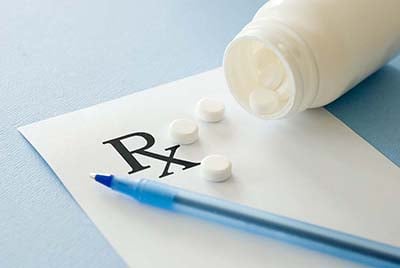GoodRx is one of those rare technology IPOs that is for a company that's actually profitable.
The solution to a big problem
As you might already know, the healthcare system in the US is quite archaic for a developed country. The average American pays over $1’200 on prescription drugs per year on average. This brings us to around $500 billion spent on prescriptions in the country every year. On top of that, over 28 million people do not have medical insurance. You got it, it’s a rather important market.
The issue was that, until recently, patients had no way to look up the price of their medication online. Even doctors did not always have the information. The patient therefore had to go to the nearest pharmacy, with no idea about the amount they would have to disburse. In addition, there are not many alternatives for a patient needing its drug: if you have a sickness impairing you, you will want to cure it whatever the price, which can creates abuses with companies imposing immense margins.

GoodRx offers an app for prescription drugs which not only indicate market prices for drugs, but also give coupons and free discounts to make sure buyers get the best deals possible. In the same manner as Expedia for travel, the company pulls its info from over 150 billion data points in order to get patients the best deal to cure their pains. In the end, patients can have a quick glance over all the retailers and pay a smaller amount than they would have paid coming directly to the next pharmacy.
"If America, as a country, decided to keep all Americans healthy, and things were upfront and transparent, there would be no need for GoodRx," said Doug Hirsch, Co-CEO of GoodRx. “I don’t suspect that’ll happen, but if it did, I’d happily hang up my hat and move on to another problem.”
Where is the money?
The business model is rather simple: GoodRx collects fees from pharmacy benefits managers, the middlemen between drugs producers and retailers. To take a very concrete example, let’s say that we have a drug for which the retail price is $50. The pharmacy benefits managers might collect a $10 dollars fee from the pharmacy, a sum they would share with GoodRx. As additional revenue sources, the company also sells advertising on its website and offers a gold subscription which benefits clients with many prescriptions.

A decent success, followed by an IPO
According to last estimates, the app is the number 1 top downloaded medical app in the US, with over 17 million unique users – these numbers are from July and most likely increased even more since then. In total, the company saved its users over $20 billion in prescription drugs expenses by helping them finding the best deals among more than 70’000 pharmacies nationwide.
Growth speaks for itself: in the first half of 2020, profit was almost as high as the profits of 2019 – $55 million for Q1+Q2 2020 and $66 million for 2019.
Last week, GoodRx raised over $1B on Tuesday when they offered exclusive shares to institutional investors at $33 apiece. They went public on the NASDAQ on Wednesday with their stocks priced at $46 at the opening and closed at $49. Overall, the share rose +53% in two days, taking the market cap to $19.5 billion – quite an impressive growth as the company was worth $2.5 billion in 2018. As of September 28th, the shares are up 11.43% at $52.04.
In the middle of many IPOs supported by bullish investors, GoodRx might be one of the most reasonable. Indeed, companies like Nikola saw their share price double in price on the first day – with a roughly $19 billion market cap. The only difference is the following: GoodRx has been profitable since 2016, whereas Nikola did not sell one single truck.

Competition and other risks
Such a profitable market is eyed by many others- There are already half a dozen other competitors on the market, among which are SingleCare and RxSaver. There is also Amazon who is looking to enter the pharma industry, and we’ll have to see how this develops. Lastly, it is possible that pharmacies could soon grow tired of seeing their margins cut through more transparent competition.
We might question how long this situation will last, but the CEOs of GoodRx, although worried about the potential threats, remain true to their mission to make healthcare more affordable and transparent: “All we can do, and all we have done, is stay true to our mission of helping provide more transparency to consumers,” said Trevor Bezdek, the company’s second co-CEO. “And it’s led us well so far.”

Sources:
https://www.goodrx.com/blog/goodrx-ipo/
https://www.cnbc.com/2020/06/17/goodrx-helps-consumers-find-drug-discounts.html
https://www.morningbrew.com/daily/2020/09/24
Read our next article: What does the Trump vs. Biden presidential debate mean for markets?





